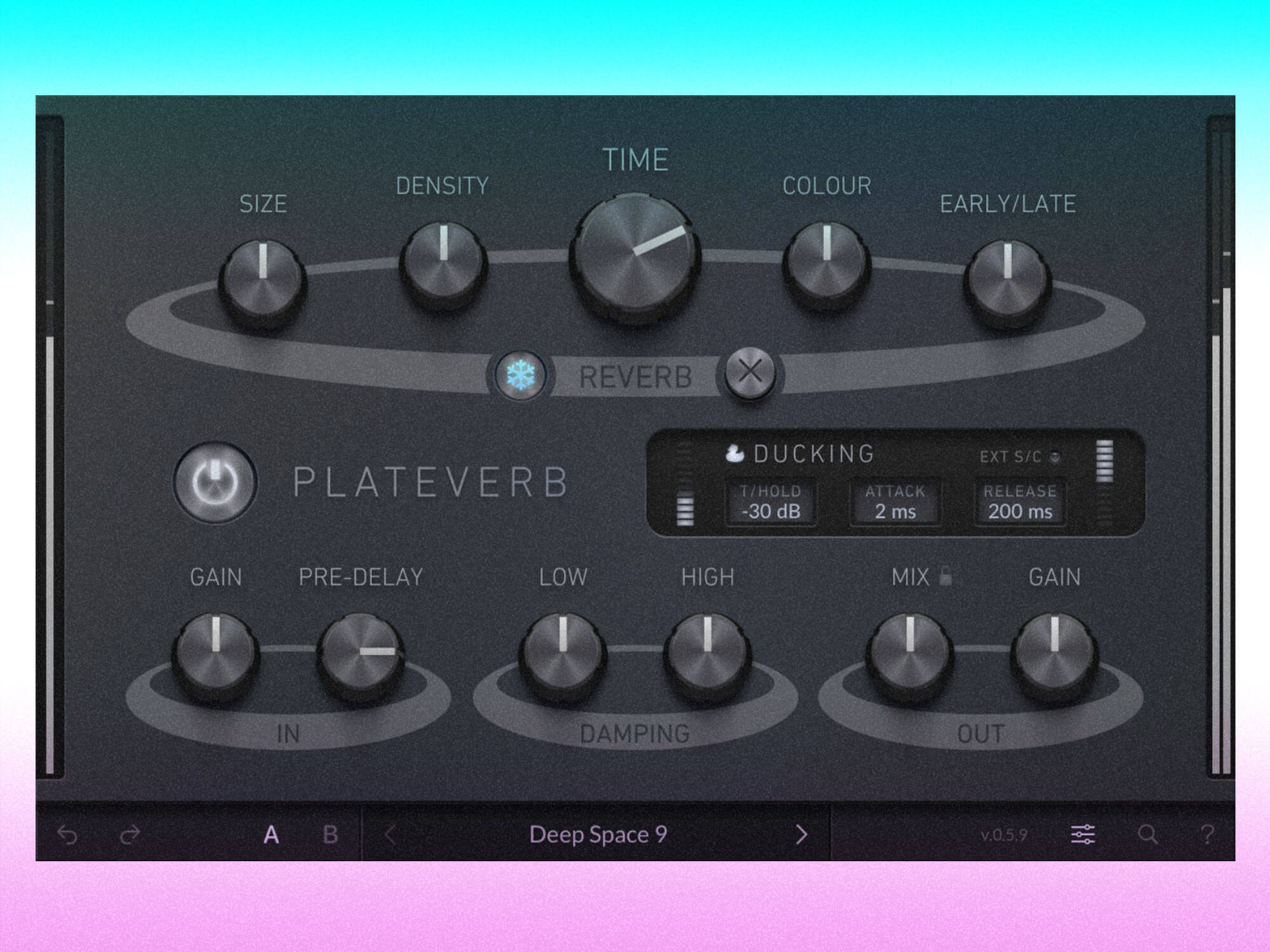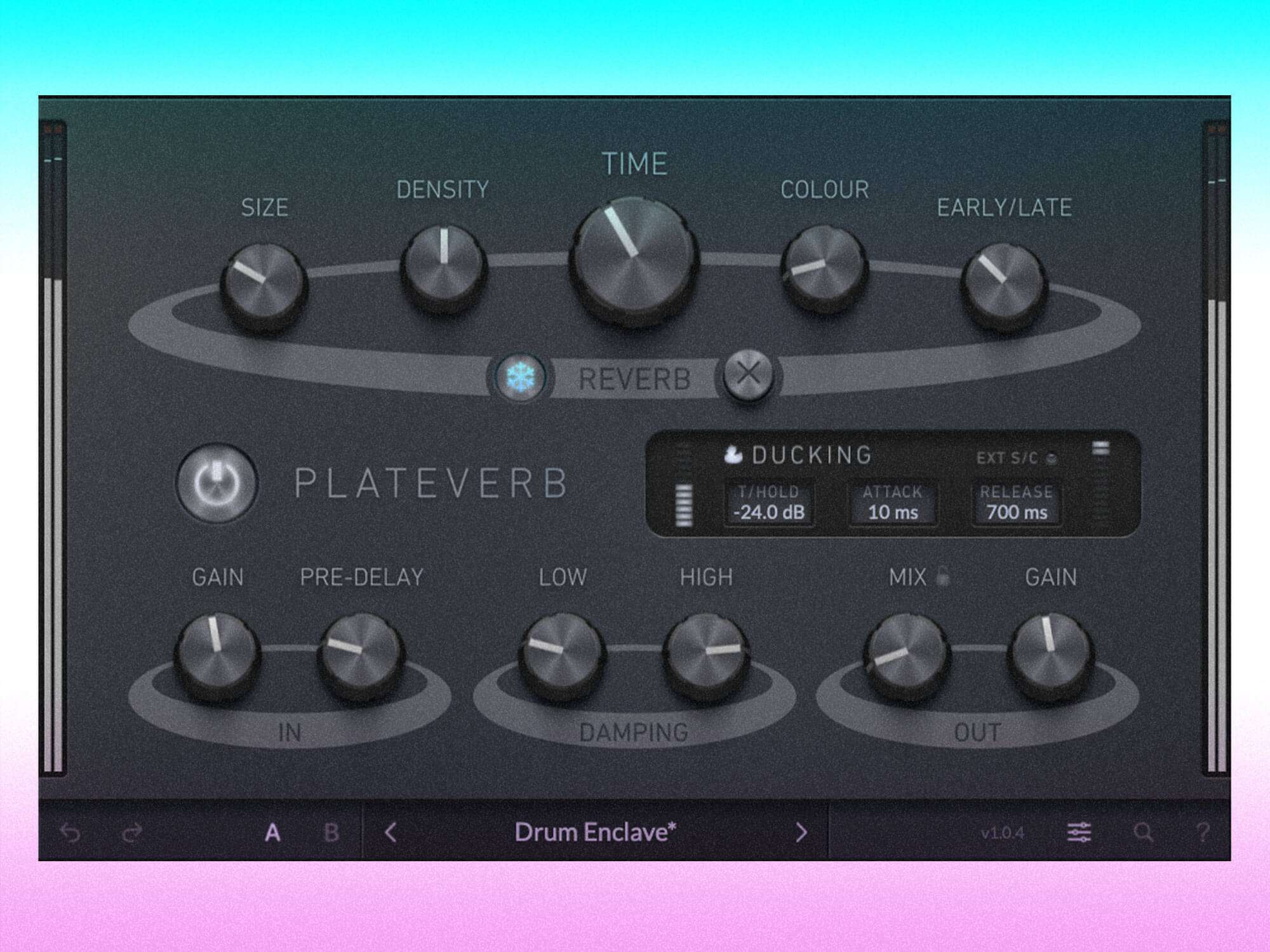Solid State Logic’s PlateVerb is a pro-sounding reverb in a pedal-style plugin package
SSL brings its extensive studio expertise to the table with a boutique plate reverb plugin that features streamlined controls plus useful extras

Solid State Logic PlateVerb
Review Overview
Our rating
8
Our verdict
⊕ Useful extras like ducking, freeze and kill
⊕ Colour and damping controls are surprisingly versatile given their limitations
⊖ Interface is very grey, with no useful visual feedback
⊖ No way to effect the tails with saturation or edit the modulation
Solid State Logic is a company that you’ll surely know if you’ve ever worked in studio, thanks to its extensive legacy of studio hardware, and more recently, an ever-growing collection of quality plugins. Whether you’re looking for an emulation of a classic SSL desk, or new, cutting-edge effects, the SSL roster has been steadily expanding to meet all these needs.
With that in mind, PlateVerb is the first in a new series of boutique reverbs that aim to offer pro-sounding effects in a streamlined, pedal-like design. At first glance, it looks a little lacklustre, but luckily a few useful extra features and excellent sound quality help to save the day.
The first thing that strikes you with PlateVerb is that it looks a little bland. If there was an award for the greyest plugin then this would win hands down; the only bit of colour is a tiny red overload light on the metering. Obviously, the sound is more important than the looks, and this is supposed to replicate a more basic effects pedal, but it still feels a little uninspiring, especially when SSL is known for its colourful dials, plus the string of recent plugins with excellent design and visual feedback.
As it stands, we have to resort to using our ears to make adjustments and work out how each dial affects the sound. Thankfully, this is an excellent-sounding reverb with a vibrant, three-dimensional feel.
Is SSL PlateVerb easy to use?
The reverb is built around two bespoke SSL-crafted algorithms for early reflections and late reflections respectively, with a dial used to blend between the two. You also have controls for decay time, room size and tail density that can be used to tailor the overall sense of space. To refine things further and help the signal sit in the mix, you have low and high damping controls, and a harmonic colour dial (essentially a tone control). Coming off the back of the recent release of FabFilter’s Pro-R 2, which features an incredibly flexible damping EQ, this does feel quite restrictive. However, in fairness, this product is built more for speed, and learning how these three dials interact can lead to quick and surprisingly varied results.

Elsewhere you have controls for pre-delay, and a mix dial that goes fully wet when turned up full. There are also input and output gain controls, plus a meter for each so that you can set optimum levels. It feels like a bit of a missed opportunity not to allow some kind of soft saturation when pushing these dials, and as it stands, you can’t really add much interest to the tail outside of the main controls.
That said, there appears to be some subtle, random pitch and volume modulation hardwired into the reverb sound. It’s hard not to compare this to Soundtoys’ SuperPlate, which was also released recently and had several flavours of saturation as well as editable pitch modulation. We should be fair to PlateVerb though, as the two competing products mentioned have higher price tags, so perhaps it’s not a reasonable comparison.
What effects does SSL PlateVerb have?
PlateVerb picks up a few extra points for its useful additional features, including a built-in ducker with an external sidechain input. This has controls for threshold, attack and release, which are especially handy for fine tuning the response as the plugin ducks the volume of the reverb tail around the input signal. It seems to be a must for any reverb plugin released these days, and it’s implemented well here, allowing you to craft a more prominent lead signal without the need for additional compression and routing.

There’s also a Freeze button that can be used to make instant atmospheres from any audio. It can sound a little stuttery on certain percussive material, but it has an interesting character that slowly evolves over time. A fun bonus here is that you can edit the Size dial to create wild pitch sweeps of the frozen audio.
Finally, there’s a Kill button that mutes the signal going into the reverb but leaves the dry signal alone and lets the reverb tails ring out. This could be useful in certain arrangement situations where you want to keep the reverb mainly off but have it affect certain hits or phrases. In most situations, you would need to set up the reverb on a bus send and use automation to achieve this, so it’s great that it lets you do it directly on a channel in the plugin.
How does SSL PlateVerb sound?
We put PlateVerb to the test on a range of material to see how it can be used to blend and enhance tracks in the mix. It sits well underneath vocals and instrument parts, providing an atmospheric bed that makes them sound a bit more classy. It’s not so much a sense of an actual space, but more a smooth thickness that envelopes the sound and helps it feel alive. We compare it with a range of other plate reverbs, and interestingly, although it has a plate vibe, it sounds quite different to all of them. It feels a little more forward and prominent in the mid range compared to the flatter and smoother sound on some of the other plugins; this is perhaps what gives it a slightly livelier feel.
Although it might not fit with all productions, it’s a lush-sounding reverb that offers an extra plate flavour to your toolkit. It might be nice if there were more than just nine presets though.
Despite our initial misgivings about the uninspiring user interface, PlateVerb redeems itself when you start to mix with it in a track. The lack of visual feedback might make it harder for some to dial-in the sound they want and to connect the controls to what they’re hearing, but it’s relatively simple enough to get to grips with by just using your ears.
Although SSL’s PlateVerb lacks the bells and whistles of some other reverbs, the price isn’t bad for the high-quality algorithms. Extras like ducking, freeze and a Kill button only sweeten the deal. As it has quite a unique sound, your best bet is to try the 14-day demo to see if it works for your material.
Key features
Price: £79.99 / $99.99 / as part of SSL Complete subscription
Pedal-style plate reverb plugin (VST, VST3, AU, AAX)
Blend between two bespoke SSL early and late reflections algorithms
Decay time, room size and density controls
Tone control via Colour, low damping and high damping controls
Ducking with external sidechain, threshold, attack and release
Freeze and Kill buttons
Mix dial to blend dry and wet